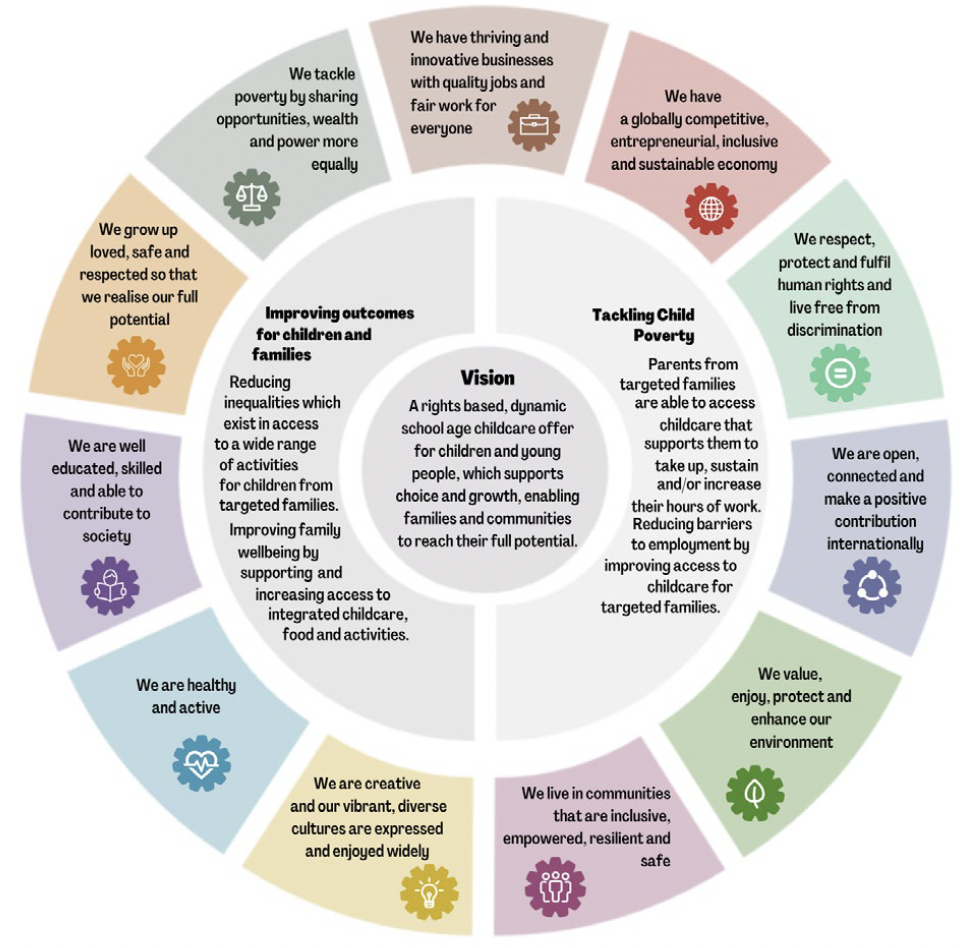School age childcare delivery framework
Sets out our commitment, action areas and the approach we will take over the next two to three years to deliver a system of affordable and accessible school age childcare which will be funded for those families who need it most.
2. Why are we building a system of school age childcare?
With a clear vision, guided by National Performance Framework, and strong links to wider policies across Scottish Government, we will focus on delivering positive outcomes for those children and families who stand to benefit most from access to school age childcare. We will take a programme based approach to deliver our projected benefits and outcomes.
Our key policy drivers are:
Tackling child poverty
- parents from targeted families are able to access childcare that supports them to take up, sustain and/or increase their hours of work.
- reducing barriers to employment by improving access to childcare for targeted families.
Improving outcomes for children and families
- reducing inequalities which exist in access to a wide range of activities for children from targeted families.
- improving family wellbeing by supporting and increasing access to integrated childcare, food and activities.

The cost of childcare, despite existing support available through Tax Free Childcare and Universal Credit (UC) benefits, presents major barriers to parents and carers taking up and sustaining employment. It also impacts people’s career choices, progression opportunities and hours worked, and this impact is disproportionately experienced by women. A school age childcare offer which is funded for families on low incomes, and directed towards the six priority family types identified in the tackling child poverty delivery plan, will help enable parents and carers to access study or training, secure or increase employment or take the time and support they need to consider how they might re-enter the labour market.
Figure 3: Six priority family types as highlighted in Best Start, Bright Futures
- Families with a baby under one
- Families with three or more children
- Lone parent families
- Families with a young mother (under 25)
- Minority ethnic families
- Families with a disabled adult or child
In addition to tackling poverty, a targeted school age childcare offer can also provide opportunities for children to access a range of activities round about the school day and in the holidays. This can help reduce inequalities and contribute to reducing the poverty related outcomes gap.
We know that funding school age childcare alone won’t deliver the wider societal outcomes we seek. That’s why we are working closely across a range of policies and partners to understand and maximise the benefits of a funded school age childcare offer. Our action areas recognise this complexity and our people-centred and place-based approach focuses on tailoring local systems to meet the needs of the children and families within their communities.
Our aim is that Scotland will have a system of accessible and affordable school age childcare, providing care before and after school and during the holidays for primary school children from low income households, and that children will be able to access healthy and nutritious food as part of this offer.

Contact
Email: schoolagechildcare@gov.scot
There is a problem
Thanks for your feedback